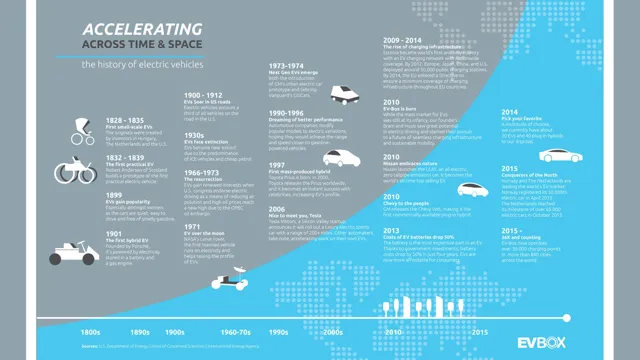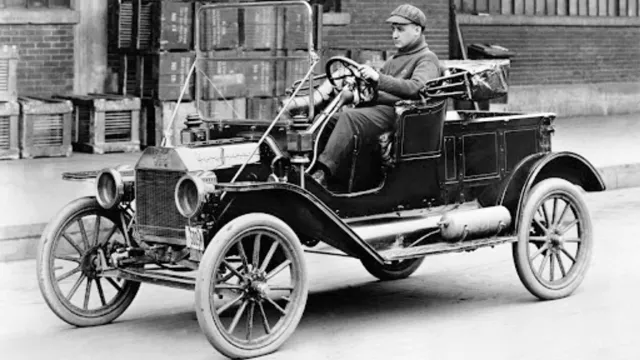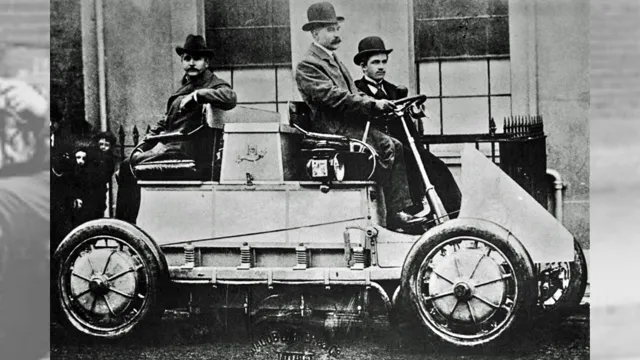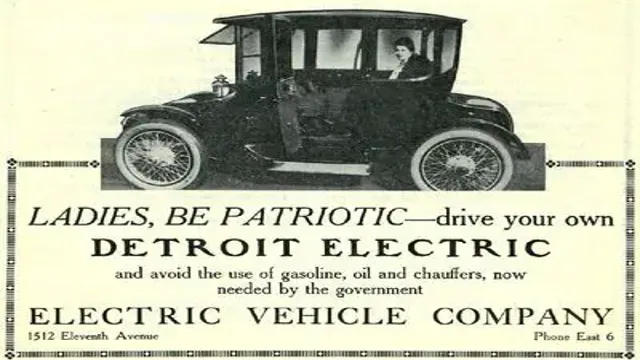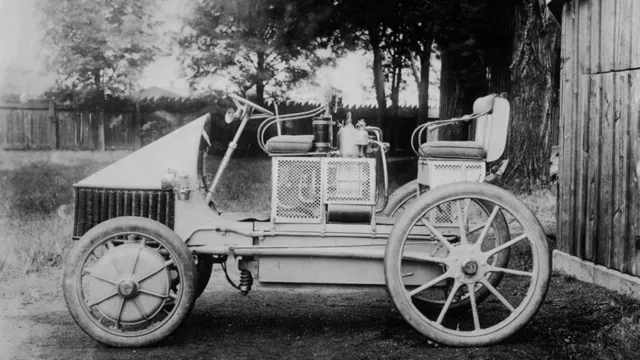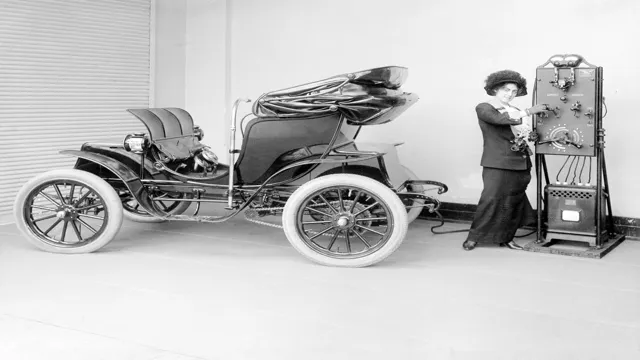The Electric Revolution: A Deep Dive into the History of Electric Cars
Electric cars are becoming increasingly popular as we strive towards a more sustainable future. But did you know that the concept of electric cars dates back to the 19th century? The evolution of these vehicles has come a long way since their invention, with advancements in technology changing the way we travel. From limited ranges and slow speeds to high-performance models that can go from 0 to 60 in a matter of seconds, the electric car has come a long way in a relatively short amount of time.
In this blog post, we’ll dive into the history of electric cars, explore how they’ve evolved over the years, and take a look at what the future holds for this revolutionary mode of transportation. So, buckle up and let’s take a journey through the evolution of electric cars!
Early Days of Electric Cars
The history of electric cars can be traced back to the early 19th century when scientists first began experimenting with battery-powered vehicles. However, it wasn’t until the late 1800s and early 1900s that electric cars became more common on the roads. In fact, electric cars were considered more practical and reliable than their gasoline counterparts, and many wealthy individuals purchased them for city driving.
However, the high cost of electric cars and the rise of gasoline-powered cars led to a decline in popularity for electric vehicles. Despite this setback, electric cars continued to be developed and improved upon over the years, and today we are seeing a resurgence in their popularity as people prioritize sustainability and reducing their carbon footprint. From the first electric car built in Scotland in the 1830s to the modern Teslas of today, the history of electric cars is a fascinating one.
Late 19th-Century Models
The late 19th-century witnessed the early days of electric cars, where it all began. The earliest electric vehicles looked more like carriages and fitted with heavy lead-acid batteries. These models had limited range and speed, making them impractical for long journeys.
However, the models improved significantly in the 1890s, thanks to the introduction of lighter and more efficient batteries. Engineers also worked extra hard to overcome the technical hurdles of efficient battery charging and motor regulation. Some of the pioneer manufacturers included Porsche, Citroen, and Peugeot, who developed electric prototypes that laid the groundwork for modern-day electric vehicles.
Despite the progress, electric cars faced stiff competition from gasoline engines, which were more powerful and easy to operate. However, electric cars have since made a resurgence in the past decade, with improved technology, favorable public policies, and changing consumer preferences making them a viable alternative to gasoline-powered vehicles.
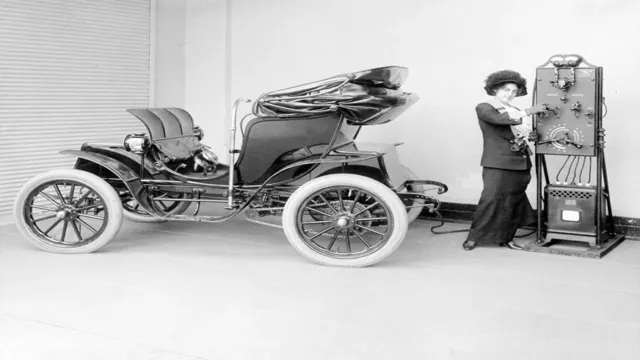
Early Twentieth Century Innovations
The early 20th century saw some incredible innovations in the automotive industry, with the introduction of electric cars being one of the most exciting. While they were initially slow and had a limited range, early electric cars were seen as a more environmentally friendly option than their gasoline-powered counterparts. One of the first successful electric cars was the Detroit Electric, which was produced from 1907 to 193
These cars were powered by rechargeable lead-acid batteries and had a top speed of around 20 to 25 miles per hour. They were popular among women as they could be easily started and driven without the need for cranking or shifting gears. However, with the emergence of mass-produced gasoline cars and improvements in their performance, electric cars eventually fell out of favor and faded into obscurity.
Fast forward to the present day, and electric cars are making a comeback, with modern technology allowing for greater range and faster charging times, and they are seen as a viable alternative to gasoline-powered vehicles.
Gas Shortages and Electric Dreams
When gas shortages hit in the 1970s, the world started to consider alternative forms of transportation, and electric cars emerged as a promising solution. However, it wasn’t the first time that electric vehicles had been introduced. In fact, the history of electric cars dates back to the late 1800s, when they were popular among affluent city dwellers.
However, with the introduction of the assembly line and affordable gas-powered vehicles, electric cars faded into obscurity. It wasn’t until the 1990s that electric vehicles regained popularity, with companies like General Motors and Toyota introducing vehicles that were capable of competing with gas-powered cars. With advancements in battery technology, electric cars now offer longer ranges and faster charging times than ever before.
As the world becomes more conscious of its impact on the environment, the demand for electric cars will only continue to grow, making them a viable solution to gas shortages and a promising step towards a sustainable future.
1970’s Fuel Crisis Brings Back the Electric Car
During the 1970s, the United States experienced a fuel crisis that resulted in high gas prices and shortages. This shortage gave rise to the rebirth of the electric car, which had been around for over 70 years, but was largely forgotten due to the convenience of gasoline-powered cars. The fuel shortage brought awareness to the importance of renewable energy sources and the need to reduce dependence on oil.
Manufacturers began producing electric cars, but they were not widely adopted due to the high cost and limited range. However, this period laid the groundwork for future advancements in electric car technology. The innovation and development in the electric car industry during the 1970s have paved the way for the emergence of the modern electric vehicles we see on the road today.
1990s EV Resurgence
In the 1990s, electric vehicles made a resurgence in popularity due to gas shortages and a renewed interest in sustainable energy. The prospect of not having to rely on a finite resource like gasoline was appealing to many people, and companies like General Motors and Toyota started experimenting with EV technology again. However, the early models of electric cars were not very practical – they tended to be slow, had limited range, and were expensive.
Despite this, there was a real sense of excitement around the potential of EVs. It was like people were dreaming of a future where driving didn’t come with such a high cost to the environment. Looking back, it’s interesting to see how this vision has become a reality with the widespread adoption of electric cars today.
It just goes to show that sometimes, big changes start with small dreams.
Early 2000s to Present Day Electric Car Landscape
The electric car landscape has come a long way since the early 2000s, when gas shortages were causing Americans to rethink the way they got around. As oil prices skyrocketed, the dream of electric cars started to gain traction. Companies like Tesla and Nissan brought electric vehicles to the forefront, with sleek designs and improved battery technology.
Today, more and more people are turning to electric cars as a viable alternative to gas-guzzlers. While there are still some concerns about range and charging infrastructure, the industry continues to grow and innovate. In fact, there are now electric cars that can travel over 400 miles on a single charge, making them a practical option for long trips.
With the continued shift towards sustainability, it’s clear that the electric car revolution is here to stay.
Electric Cars Rise in Popularity
The history of electric cars dates back to the early 19th century, when inventors began experimenting with electrical power for vehicles. However, it wasn’t until the 21st century that electric cars began to gain popularity across the globe. One of the major reasons for this surge in popularity was the need for eco-friendly alternatives to fossil fuel-powered cars.
Electric cars emit zero emissions, making them an ideal choice for people concerned about the environment. Additionally, advancements in battery technology have made electric cars more efficient and practical than ever before. With the rise of Tesla and various other manufacturers, electric cars are no longer seen as a futuristic concept but as a mainstream option that can compete with traditional cars in terms of performance and convenience.
The history of electric cars is one of perseverance and innovation, and it is exciting to see how they continue to evolve to meet the changing needs of consumers.
Tesla’s Game-Changing Role in EV Industry
It’s no secret that electric vehicles (EVs) are quickly gaining popularity among drivers worldwide. With rising concerns over climate change and oil dependency, more and more people are turning to EVs as a cleaner and more sustainable mode of transportation. This has led to a surge of innovation in the industry, with manufacturers like Tesla leading the charge.
Tesla’s game-changing role in the EV industry cannot be overstated. From building the first all-electric sports car to developing cutting-edge autonomous driving technology, Tesla has been pushing the limits of what’s possible in the world of EVs. Its cars have become synonymous with quality, performance, and eco-friendliness, and as a result, it has attracted a dedicated and passionate following of fans and customers.
As more and more people become aware of the benefits of electric cars, it is clear that Tesla will continue to play an instrumental role in shaping the future of the EV industry.
Green Initiatives and Government Support
Electric cars have been gaining significant popularity in recent years, thanks in part to government support and green initiatives. As more people become environmentally conscious, they are searching for ways to reduce their carbon footprint, and electric cars offer a sustainable and eco-friendly solution. Governments around the world are also incentivizing the use of electric cars through tax credits and subsidies.
The rise of electric cars is a positive sign for our planet, as it means we are moving towards a greener future. However, there are still some challenges that need to be addressed, including the high cost of electric cars and the lack of charging infrastructure. Nonetheless, the increasing popularity of electric cars shows that consumers are willing to invest in the future of our planet.
The Future of Electric Cars
Looking back at the history of electric cars, it is fascinating to see how far they have come in just a few decades. The first electric car was developed in the early 1800s, and by the turn of the 20th century, electric vehicles were actually more popular than their gasoline-powered counterparts. However, the discovery of oil in Texas led to a shift in the market, and internal combustion engines quickly became the dominant form of transportation.
Fast forward to today, and we are seeing a resurgence in the popularity of electric cars as they become more mainstream and accessible. With technological advancements, improved battery efficiency, and government incentives, it seems that the future of transportation is definitely electric. As we continue to move toward a more environmentally-friendly future, it is exciting to see the potential that electric cars have to transform the way we think about transportation.
Conclusion
As the history of electric cars shows, people have been trying to make sustainable transportation a reality since the days of Thomas Edison. From humble beginnings to the sleek, environmentally friendly machines of today, the electric car has come a long way. Though there have been bumps in the road, such as the decline of electric vehicle popularity in the early 20th century, the electric car has proven its staying power and potential to revolutionize the way we think about transportation.
With the advancements in technology and growing demand for eco-friendly options, it’s clear that the future of the automotive industry is electric – and who knows? Maybe one day, electric cars will be as ubiquitous as the horseless carriage was in the days of yore.”
FAQs
What is the history of electric cars?
Electric cars were first introduced in the 1800s, but they didn’t become popular until the 2000s due to advancements in battery technology and increased concern for the environment.
What were the early challenges of electric cars?
Early electric cars had limited range and were expensive compared to gasoline-powered cars. Additionally, charging infrastructure was very limited, making it difficult for owners to find places to charge their vehicles.
What is the current state of the electric car industry?
Electric cars have become increasingly popular and are now being produced by many major car manufacturers. The development of more efficient batteries has increased range, making them a viable option for many people.
What are the benefits of driving an electric car?
Electric cars produce no emissions, are generally cheaper to operate than gasoline-powered cars, and have lower maintenance costs due to fewer moving parts. Additionally, they are quieter and provide a smoother driving experience.
What is the future of electric cars?
The future of electric cars looks bright, with many governments around the world setting goals to phase out gasoline-powered vehicles in the coming decades. Advances in battery technology and charging infrastructure will continue to make electric cars more appealing to consumers.
